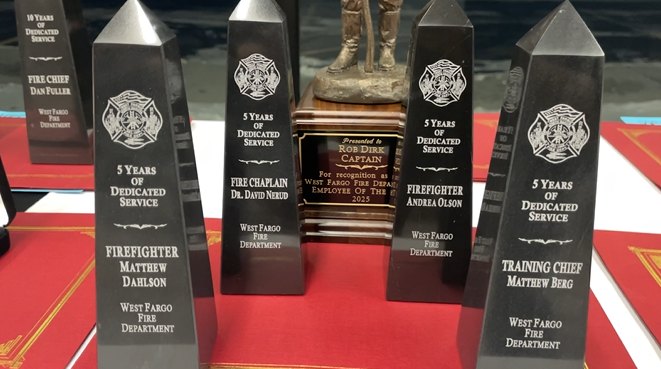Former Greenpeace employee tells jury he emphasized nonviolence at Dakota Access Pipeline protests

MANDAN, N.D. (North Dakota Monitor) — A former Greenpeace employee who trained demonstrators during the Dakota Access Pipeline protests told jurors Tuesday that he never engaged in underhanded efforts to undermine the pipeline.
Greenpeace has spent the last two weeks on trial in Morton County District Court related to its involvement in the protests against the pipeline in 2016 and 2017.
Thousands of protesters camped in south central North Dakota just north of the Standing Rock Sioux Reservation, where the pipeline now crosses under the Missouri River. The demonstrations were started by tribal members who oppose the pipeline out of the belief that it threatens the tribe’s water supply, has harmed sacred cultural sites and infringes on unceded Sioux Nation land.
Pipeline developer Energy Transfer claims that Greenpeace encouraged protesters to cause millions of dollars of damages to the pipeline, and that it deliberately defamed the company in order to get banks to divest.
Energy Transfer has held out Navajo activist and former Greenpeace employee Cy Wagoner as a key figure in this plan.
Greenpeace hijacked what was otherwise a peaceful and locally led movement, the company claims. Attorneys for Energy Transfer say Greenpeace paid thousands to send Wagoner and others affiliated with the Native activist group Indigenous Peoples Power Project to teach protesters to use tactics including vandalism, trespassing and intimidation to stop the pipeline.
Wagoner on Tuesday said none of this is true.
He said that he and his fellow trainers were committed to nonviolence, and that their training sessions reflected this.
Wagoner said during the trainings, he told attendees to follow the leadership of the Standing Rock Sioux Tribe and to conduct themselves respectfully at all times. The training included admonitions against using violence, as well as instruction about de-escalation tactics, he said.
He also said the trainings he and others provided were not Greenpeace’s idea. The tribe asked him to come to Standing Rock to educate people about nonviolent protest tactics, he said.
Wagoner said he then sought grant money from Greenpeace to support the effort. The grant included money for travel, lodging, food, camping supplies and winter gear, he said.
Wagoner said that if Greenpeace hadn’t agreed to provide that grant, he and the other trainers would have found other funding.
Over the course of the trial, attorneys for Energy Transfer have repeatedly brought up a text that Wagoner sent to a colleague about the nature of the protests.
“I would not be OK to replicate things that happened there,” he wrote.
Wagoner said Tuesday that the message was taken out of context. He said he was referring to challenges to the Indigenous Peoples Power Project faced providing nonviolent direct action training. By the time he first arrived at the camps, he said other groups not affiliated with the Indigenous Peoples Power Project or or Greenpeace were already providing training of their own.
He said he believes that training did not place the same emphasis on nonviolence or safety, though he acknowledged he did not attend any. As a result, demonstrators were putting themselves in danger and getting arrested, he said.
Trey Cox, an attorney representing Energy Transfer, questioned Wagoner over whether the trainers encouraged protesters to use lockbox devices — also known as “sleeping dragons” — to tie themselves to construction equipment and render it unusable. Energy Transfer has placed a considerable amount of emphasis on lockboxes as evidence of the lengths Greenpeace allegedly went to stop the pipeline.
Some Greenpeace employees acknowledged during previous testimony that the organization brought lockboxes to the protest camps, though Wagoner said Tuesday he was not aware of this.
He said that he never instructed anyone to use the devices.
Cox showed Wagoner photos from the protests that appeared to show three other Indigenous Peoples Power Project members using lockboxes, including one who was receiving money from Greenpeace to train protesters.
Wagoner said he never used lockboxes and did not encourage others to do so.
“They made decisions on their own,” he said.
Greenpeace started presenting its case Monday afternoon. On Tuesday, an attorney representing Greenpeace said the defense could wrap up its case as early as Friday.
(Story written by Mary Steurer – North Dakota Monitor)






